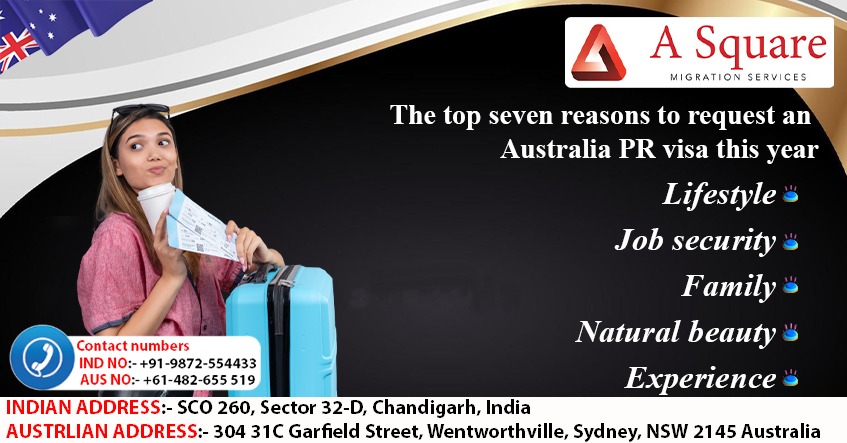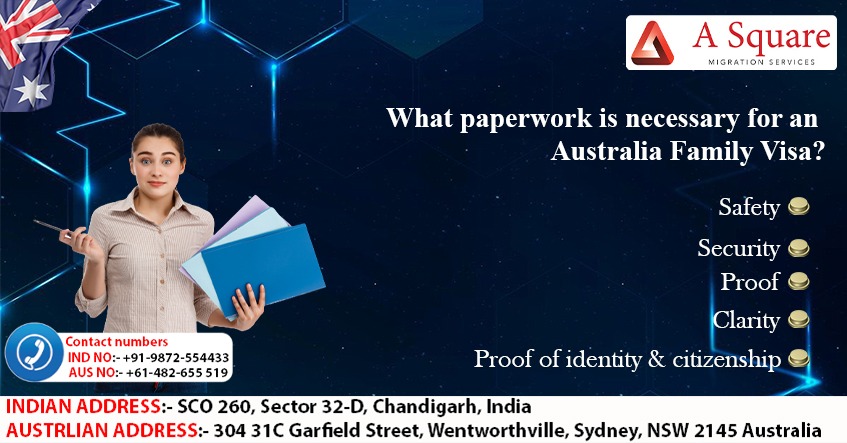Outlining the Principles of Indian Visa requirements for Australia
The subclass 189, commonly known as the Skilled Independent visa, is one of the main choices for anyone looking to obtain a Australia Pr visa Requirement. This visa is points-tested, meaning that Indian nationals who want to travel to Australia for skilled employment, business, or study must obtain a minimum number of points.
Credentialed community language, studying in a regional area of Australia, and partner skills are additional considerations. This immigration route is primarily intended for highly qualified individuals who are unsponsored by an employer, a state or territory, a family member, or a member of the public.
Moving to Australia is a step towards a bright and secure future that leads to a wealth of opportunities for professionals who are fully qualified with the knowledge and experience to meet many of the job requirements that are carried out by the Australian government once you have fulfilled all the Australia PR Requirement for a prospective candidate.
With the aid of an Australia permanent residency visa, you will have access to long-term benefits including free education at top-notch primary, secondary, and tertiary institutions, as well as subsidised university tuition.
As a permanent resident of Australia, you can also enrol in Medicare, the country’s national health programme, and apply for bank loans to buy property there, just two of the many advantages of doing so.
A variety of social security benefits are also available to you, including utilities and pharmaceutical allowance, the Pensioner Education Supplement, the Commonwealth Rent Assistance, concession and health cards, and crisis and bereavement payments. You only need to obtain 65 points or more on the point system to meet the Australia Visa Requirements.
Age, education, job experience, specialised training, Australian study requirements, and the Professional Year in Australia are some of the criteria used to evaluate a profile for an Australia PR visa.
Required Documents For Australia Visa
The conditions for applying for an Australia visa for Indians include the following documentation:
- Notarized copies of all pages of only the current passport, including the bio data page, changes page, and rear page;
- Original passport with at least three blank pages and a minimum validity of six months;
- Application for an Australia visa;
- two recent colour pictures
- a personal cover letter (for employed people, on plain paper; for self-employed people, on company letterhead);
- the most recent bank statement, original in order;
- Form 16 or recent 3-year income tax returns;
- Fixed deposits, real estate investments, other investments, etc. are acceptable supporting financial documents.
- You can be subjected to medical and x-ray exams.
Note: Please make sure that your images adhere to the criteria because the government is quite strict about the photo requirement.
How Many Types of Australian Visas Are There Available?
Depending on the reason for the trip, a range of visas are available for Australia. The many immigration visas available to Indians and other nationalities are listed below:
Visa for Medical Treatment (Subclass 602): Only those who want to go to Australia for medical evaluations, procedures, or organ donation are eligible for this visa. However, surrogacy is not one of them.
Working Vacation Permit (Subclass 417): It is only intended for people between the ages of 18 and 30, who are enthusiastic about taking lengthy holidays and boosting their finances with temporary employment lasting no longer than 12 months. However, citizens of Canada, Belgium, Denmark, Cyprus, Finland, Estonia, Hong Kong, Germany, France, Italy, Ireland, Malta, the Netherlands, Japan, Norway, Sweden, South Korea, the United Kingdom, and Taiwan are the only ones eligible for this visa category.
Visa for Work and Vacation (Subclass 462): It is only intended for people between the ages of 18 and 30, who are enthusiastic about taking lengthy holidays and boosting their finances with temporary employment lasting no longer than 12 months. Those who qualify for this visa category include citizens of China, Chile, Argentina, Brazil, Bangladesh, Malaysia, Indonesia, Portugal, Poland, Slovenia, Slovakia, Turkey, Thailand, Uruguay, and the United States.
Visa for transit (Subclass 771): Only those who intend to transit through Australia for fewer than 72 hours are eligible for this visa.
Visitor Visa: Only those who want to travel to Australia for a brief time are eligible for this visa. This might be done for tourism or for business. For as long as a year, three months, or two months, you can get this form of visa.
Visa for Students (Subclass 500): Only those who desire to enrol full-time in a respectable or well-respected educational institution are eligible for this visa.
Programme Particular (Subclass 416): It is only available to those who want to take part in specific authorised programmes that offer opportunities for cultural and community service.
Visa for Permanent Residents: Only those who meet the criteria to become an Australian permanent resident are granted this visa. Before applying, applicants must be aware of the specific laws and regulations that apply to this type of visa. Once a person’s visa status is upgraded to “permanent resident,” they have full rights to live and work in Australia for the rest of their lives. Additionally, it gives them access to a variety of government-sponsored benefits like Medicare (Medical Coverage), which is offered by the Australian government.
Visas of a Special Category (Subclass 444): Under the Trans-Tasman Travel Arrangement, it is only given to New Zealanders who hold a current visa that allows them to enter the Australian zone. With this visa, he or she can visit, stay, and work in Australia indefinitely. However, there are a few tough requirements, including not having a criminal record, no untreated tuberculosis (TB), and not having been expelled, excluded, or deported from a country. Following the person’s arrival at an airport in Australia, this visa is granted.
155 and 157 of the RRV (Resident Return Visa) subclasses: This type of visa enables past and present permanent residents to visit any country and then return to Australia as a PR. An RRV enables the holder to frequently travel back to Australia while the visa is still valid. They frequently have a validity duration of between three months and five years.
Return Visa for Provisional Residents (Subclass 159): It is issued to individuals who previously held a Norfolk Island immigration permit and who currently hold a GEP (General Entry Permit) or a TEP (Temporary Entry Permit). Only for educational purposes may holders of this type of visa remain and work on Norfolk Island or in certain Australian regions. Only those who meet the aforementioned requirements are eligible to apply for a confirmatory resident visa.
Visa for Confirmation of Residence (Subclass 808): Former holders of Norfolk Island Immigration Permits who had either a TEP/GEP or a UEP (Unrestricted Entry Permit) and fulfilled all residency Australia Pr Requirement were eligible to receive it. With this visa, people can stay and work in Australia indefinitely. As long as they travel during the validity period, they are also allowed to leave and reenter Australia as they want.
Moving to Australia is like relocating to a country with some of the best prospects for businesspeople, students, and skilled professionals. After all, it has a reputation for being a historical, financial, and cultural centre for immigrants looking to start over in another country.
Just be sure that you have met many of the Australia Pr Requirement before deciding to apply for permanent residency in a country like Australia, since they are crucial. Wish to learn more? Contact us at +61 482 655 519 to speak with one of our licenced immigration advisors, or send us an email at anisha@asquaremigration.com.










